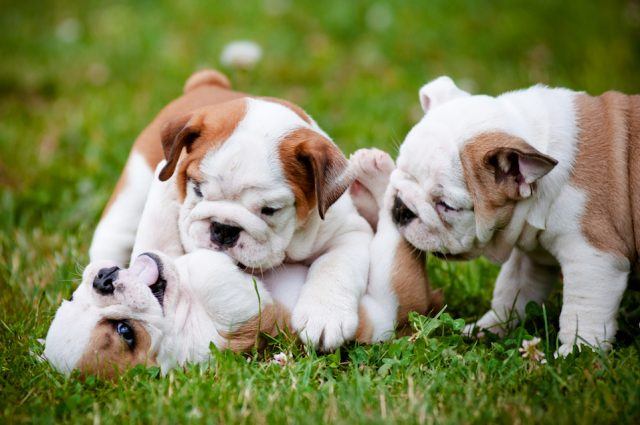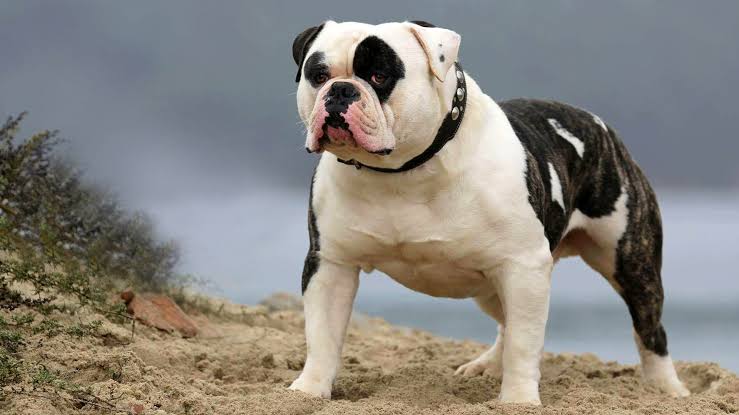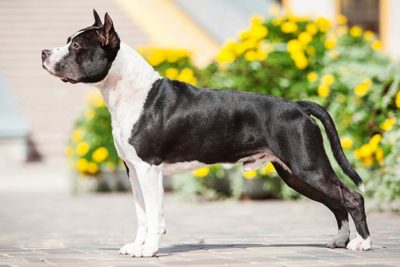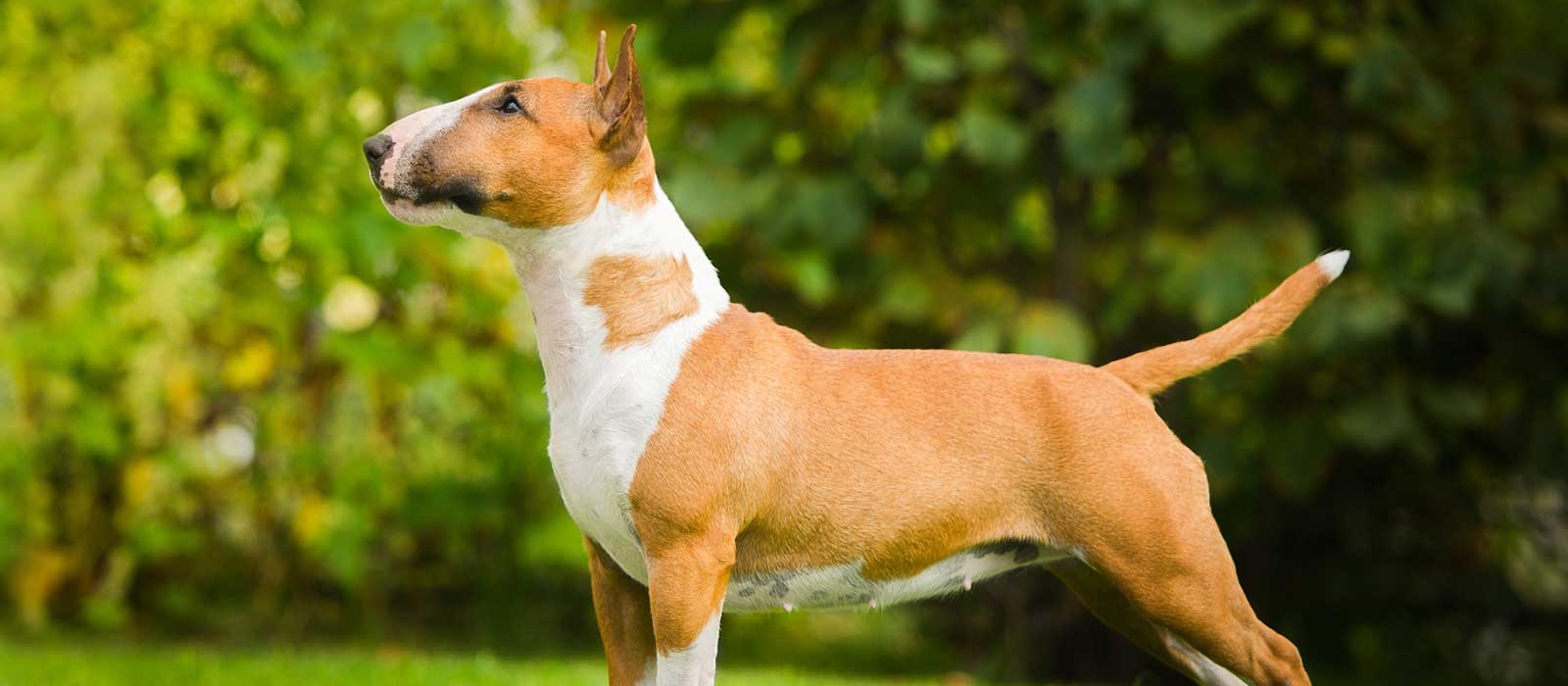
Top 5 Demystifying Bully Breeds – Understanding Pit Bulls
There is much confusion surrounding the dog breeds associated with the name “pit bull.” “Pitbull” has become a catch-all term for dogs that share a common physical appearance and background.
Contents
DEMYSTIFYING BULLY BREEDS: UNDERSTANDING PIT BULLS
These breeds have earned poor reputations as aggressive fighting dogs, but with proper handling and training, these dogs can be loyal and loving pets. Below is a brief description of each of the bully breeds.
AMERICAN BULLDOG

The American Bulldog is an American variation of the popular English Bulldog. The English Bulldog was developed for the sport of bull-baiting, which involved setting one or multiple dogs on an enraged bull. In America, the Bulldog was used by farmers for guarding and hunting. The American Bulldog has longer legs than its English cousin.
It has a muscular frame, with a deep wide chest and square head. Many American Bulldogs have slight underbites. All colors and markings can be seen in the American Bulldog, though the most common is all white or mostly white. Dogs can weigh up to 120 pounds and bitches up to 100. This is a determined, energetic, and loyal breed. However, without proper training and socialization, the American Bulldog may become demanding and destructive.
AMERICAN STAFFORDSHIRE TERRIER


The American Staffordshire Terrier, or AmStaff for short, was developed in England by crossing English Bulldogs with various terriers. This breed was bred for dog fighting, a popular sport in England and America in the 1800s. When dog fighting was banned in America in 1900, the AmStaff became a family dog, used for guarding, weight pulling, and agility.
The AmStaff is low to the ground, with short legs and a stocky muscular body. The head is round and large for the breed’s size. All colors and markings appear in the AmStaff, but most are fawn, brindle, or black. Both dogs and bitches should not weigh more than 70 pounds. The AmStaff is extremely outgoing and affectionate. Though aggression has been largely bred out of the breed, it is still wise to socialize an AmStaff with other dogs, as some may develop dog aggression.
STAFFORDSHIRE BULL TERRIER

The Staffordshire Bull Terrier, or Staffie, shares a very similar history with the American Staffordshire Terrier. Both are similar in appearance, but the AmStaff is often taller and heavier than the Staffie.The following colors are seen in the Staffie: red, fawn, black, blue, white, or brindle.
Dogs and bitches should not weigh more than 40 pounds. The Staffie is a highly energetic breed, bursting with affection and playfulness. Training and socialization is an absolute must in order to harness this breed’s energy. As with the AmStaff, early socialization with other dogs is required, as this breed has had a history of dogfighting and may develop dog aggression.
BULL TERRIER
 This comes in two variations, Standard and Miniature. Like the other bully breeds, it was developed in England for bull baiting and dogfighting. However, the breed quickly gained favor with English nobility for its distinct egg-shaped head and its fighting career largely ceased. The nobility bred down the Standard to the Miniature version. The Standard is divided into two categories: the White Bull Terrier and the Colored Bull Terrier.
This comes in two variations, Standard and Miniature. Like the other bully breeds, it was developed in England for bull baiting and dogfighting. However, the breed quickly gained favor with English nobility for its distinct egg-shaped head and its fighting career largely ceased. The nobility bred down the Standard to the Miniature version. The Standard is divided into two categories: the White Bull Terrier and the Colored Bull Terrier.
The White Bull Terrier must be all white with no variation. The Colored can have any colors and markings, as can the Miniature. Standard dogs and bitches can weigh up to 80 pounds, while Miniatures can weigh up to 30 pounds. “Clownish” is often used to describe the breed’s temperament. This is a courageous, active, and playful breed. If all this energy goes unused, Bull Terriers can become destructive and snappy.
AMERICAN PIT BULL TERRIER
The American Pit Bull Terrier, or the APBT, has a fuzzy history. It was undoubtedly used in bull-baiting and dog fighting, but its origins are unknown. The APBT has a taller, leaner body than its other bully cousins. The head is square with broad cheeks and the chest is thick and deep.
All colors and markings are accepted with the exception of blue eyes and merle. The APBT rarely weighs over 60 pounds. Though this breed is often deemed “vicious,” in reality many “pit bulls” responsible for attacks have been bred with other breeds.
The true APBT wants nothing more than to please its owner. It is a loving and bouncy breed that is easily trained. However, the APBT can develop dog aggression due to its breeding. Training and socialization is a must.
All dogs can be loyal and adoring pets. Before choosing a pet, research is required in order to determine what breed is right for your lifestyle.

